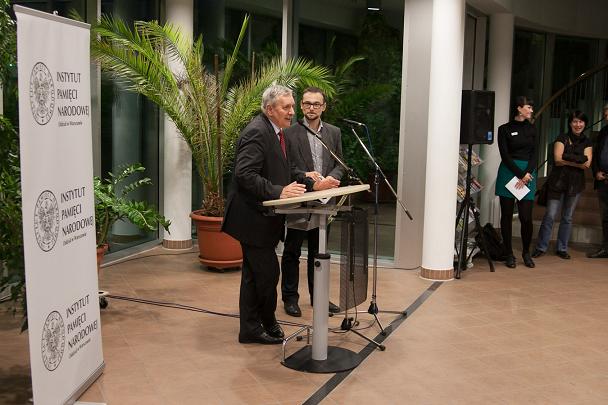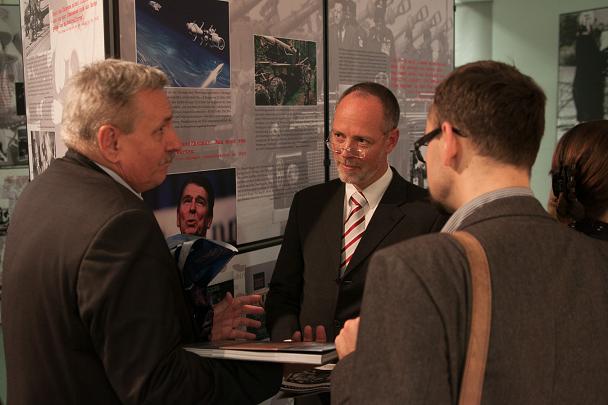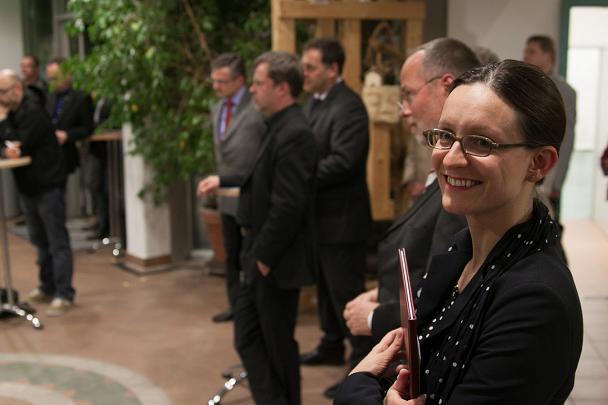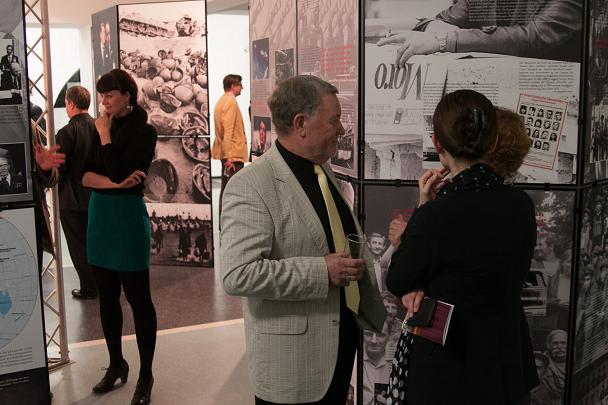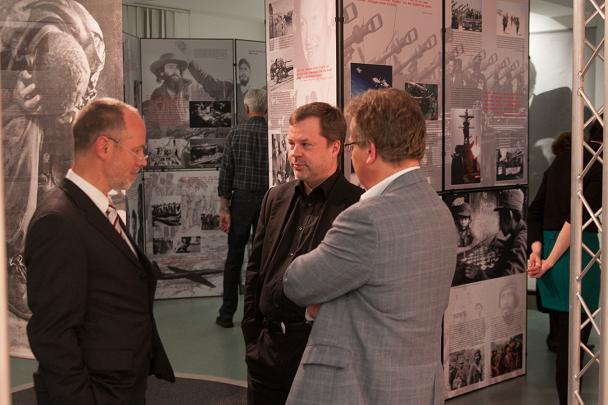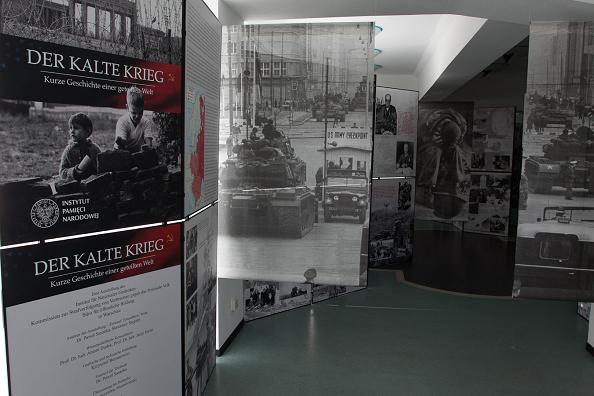On 2 October 2012, in Haldensleben’s KulturFabrik an opening ceremony of the exhibition "Cold War. A brief history of the divided world " took place. The exhibition was prepared by the Institute of National Remembrance branch in Warsaw. The ceremony was attended by the representatives of the Institute of National Remembrance in Warsaw - Prof. Jerzy Eisler (Branch Director), Dr. Paweł Sasanka and Sławomir Stępien (Historical Education department staff, and the authors of the exhibition). The opening was commenced by Stephan Dorgerloh (Minister of Culture of the Land of Saxony-Anhalt), Konrad Otto Hennig (Deputy Mayor of the City of Haldensleben) and Magdalena Erdman (Counsellor, Head of the Department for Public Diplomacy at the Polish Embassy in Berlin).
The vernissage was accompanied by lectures by Prof. Jerzy Eisler (Director of the Branch of the Institute of National Remembrance in Warsaw) and Dr. Sascha Möbius (Director of the Museum of the Division of Germany in Marienborn).
The exhibition was organized in cooperation with the Center for Historical Research of the Polish Academy of Sciences in Berlin, and the Museum of the Division of Germany in Marienborn.
In addition to the exhibition opening ceremony in Haldensleben, the IPN Warsaw branch delegation had the opportunity to visit the Museum of the Division of Germany in Marienborn and to hold a meeting with its director Dr. Sascha Mobius, which regarded further cooperation in the field of education and exhibitions, as well as subsequent presentations of the exhibition "Cold War. A short history of the divided world" in Germany.
Museum in Marienborn is a part of the Land Memorials’ Foundation of Saxony-Anhalt, which also includes the Museum of Frontier Zones in Helmstedt and Border Monument in Haldensleben. All of these facilities are part of the "Beyond Borders - roads to the neighbor" project. The Museum in Marienborn is also a place of memory and historical-political education, as it is located in the former military unit post formerly constituting a border crossing between East and West Germany in Marienborn-Helmstedt. Up until 1989, it acted as the borderline stronghold of the Communist regime and became the needle eye between East and West.
The exhibition in Haldensleben will be on display until 30 November 2012, and the next the showing will be held in Rostock.
---
The exhibition “Cold War. Short History of Divided World” was prepared by Warsaw Branch Office of the Institute of National Remembrance in relation to the 20th anniversary of reunification of Germany.
The exhibition is an invitation to go back to the near past, to the reality of conflict which dominated Europe for over five decades after the WWII, influenced lives of millions and shaped the modern world.
The totalitarian and multifaceted character of cold war confrontation left its mark on so many different areas of life that each attempt of showing it in one place and one time would surely leave one unsatisfied.
Taking the above into consideration, the authors proposed their own, naturally subjective point of view on the cold war, folding it up into a multiplot story. Those plots include events, phenomena with their various aspects and their main characters, significant for the course of events of the conflict – but often less familiar or even forgotten.
Cold war bore traces of true war, and the term “cold” should not be misleading. The war was often even too fiery, even though open military confrontations between the superpowers were occasional. Often the description of cold war boils down to a few expressions and notions. The most often recalled are: Berlin wall, arms race, the wars in Korea, Vietnam and Afghanistan, as well as Cuban crisis. But undoubtedly few people could place in this context such events as civil war in Greece, the Kitchen Debate between Nixon and Khrushchev, the attack of communist China on the Yijiangshan island belonging to Kuomintang, or Americans’ Invasion of Grenada.
We hope that the exhibition gives opportunity to recall numerous statements that were pronounced by politicians on both sides of the cold war barricade and remained for good in the history, e.g. the speech by Winston Churchill in Fulton, with the words “an iron curtain”, the speech by John F. Kennedy in West Berlin, a year after Berlin Wall’s erection, or Leonid Brezhnev’s announcement of his doctrine (later called “Brezhnev Doctrine”).
The exhibition’s narrative is particularly strong due to photos. We tried to focus not only on the photos which are already icons of the cold war and the less familiar documentary photos, which complement the exhibition, but also on those that will be treasured in our minds and are thought-provoking. Therefore, the form of the presentation should be very favorable i.e. big, eye-catching, photo-enlargements, well arranged in space, accompanied by a few-sentence comments. Those who wish to learn more will find extensive information on several separate boards.
Thus, the exhibition’s subheading “Short History of Divided World” captures its core meaning and the authors’ intention – to reflect upon the conflict which for almost half a century had dominated the history of the world, and yet not to aspire to be comprehensive chronicle of the events.
